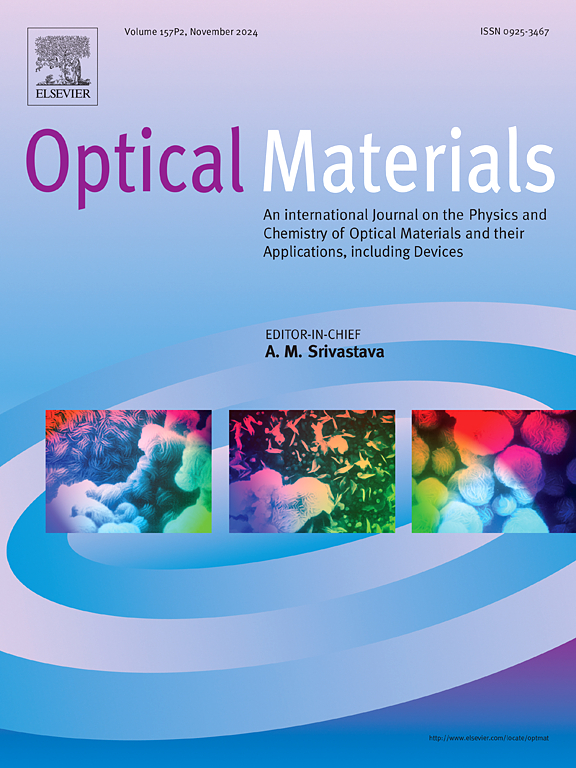通过氧离子注入提高熔融石英抗激光损伤性的氧硅比和微观结构调控方法
IF 3.8
3区 材料科学
Q2 MATERIALS SCIENCE, MULTIDISCIPLINARY
引用次数: 0
摘要
利用氧离子植入熔融石英表面来研究化学成分的调节和微观结构的演变,从而了解抗激光损伤性的增强机制。由于高能离子诱导的表面溅射导致熔融石英表面的残余缺陷被钝化,因此表面质量得到了改善。在未植入表面,氧硅原子比为 1.9,并随着离子通量的增加而增加。植入过程中的氧离子可以重组缺氧缺陷,但过高的离子通量会导致结构缺陷浓度增加,尤其是 POR 和单线态氧,拉曼光谱中 SiO4 四面体环状结构的转变也证实了这一点。氧植入可以改善熔融石英的表面质量,补偿紫外激光辐照下的缺氧,并使缺氧缺陷重组,从而降低激光对熔融石英损伤的概率和增长。离子通量的优化参数为 1 × 1017 离子/平方厘米。这项研究为进一步提高熔融石英表面抗激光损伤和生长的能力提供了一种潜在的技术,而这对于高通量输出和 ICF 设备的稳定运行至关重要。本文章由计算机程序翻译,如有差异,请以英文原文为准。
Regulations of oxygen-silicon ratio and microstructure to enhance laser damage resistance of fused silica via oxygen ion implantation
Oxygen ion implantation of fused silica surface was utilized to study the regulation of chemical composition and the evolution of microstructure to understand the enhancement mechanism of the laser damage resistance. The surface quality is improved owing to the passivation of the residual defects of fused silica surface resulted from the surface sputtering induced by the energetic ions. In the un-implanted surface, the oxygen-silicon atomic ratio is 1.9, which increases with the ion fluence. The oxygen ions during the implantation can recombine the oxygen-deficient defects, but the excessive ion fluence will lead to the increased concentrations of the structural defects, especially for POR and singlet oxygen, which is also confirmed by the transformations of the ring structures of SiO4 tetrahedra in Raman spectra. Oxygen-implantation improve the surface quality, compensate for oxygen deficiency under ultraviolet laser irradiation, and recombine the oxygen-deficient defect, thereby decreasing the probability and growth of laser damage to fused silica. The optimized parameter of ion fluence is 1 × 1017 ions/cm2. This study offers a potential technique to further enhance the resistance to laser damage and growth of fused silica surface, which is crucial for the high-flux output and stable operation of ICF facilities.
求助全文
通过发布文献求助,成功后即可免费获取论文全文。
去求助
来源期刊

Optical Materials
工程技术-材料科学:综合
CiteScore
6.60
自引率
12.80%
发文量
1265
审稿时长
38 days
期刊介绍:
Optical Materials has an open access mirror journal Optical Materials: X, sharing the same aims and scope, editorial team, submission system and rigorous peer review.
The purpose of Optical Materials is to provide a means of communication and technology transfer between researchers who are interested in materials for potential device applications. The journal publishes original papers and review articles on the design, synthesis, characterisation and applications of optical materials.
OPTICAL MATERIALS focuses on:
• Optical Properties of Material Systems;
• The Materials Aspects of Optical Phenomena;
• The Materials Aspects of Devices and Applications.
Authors can submit separate research elements describing their data to Data in Brief and methods to Methods X.
 求助内容:
求助内容: 应助结果提醒方式:
应助结果提醒方式:


